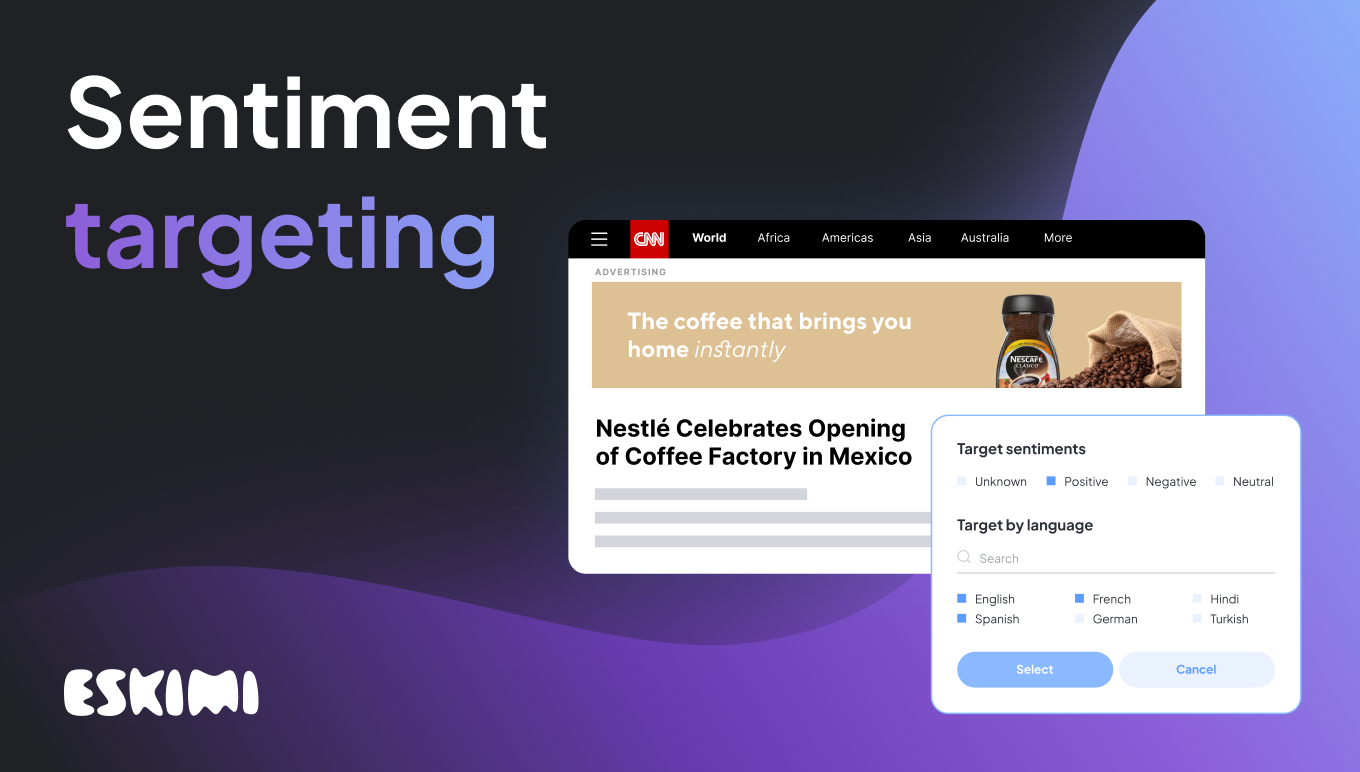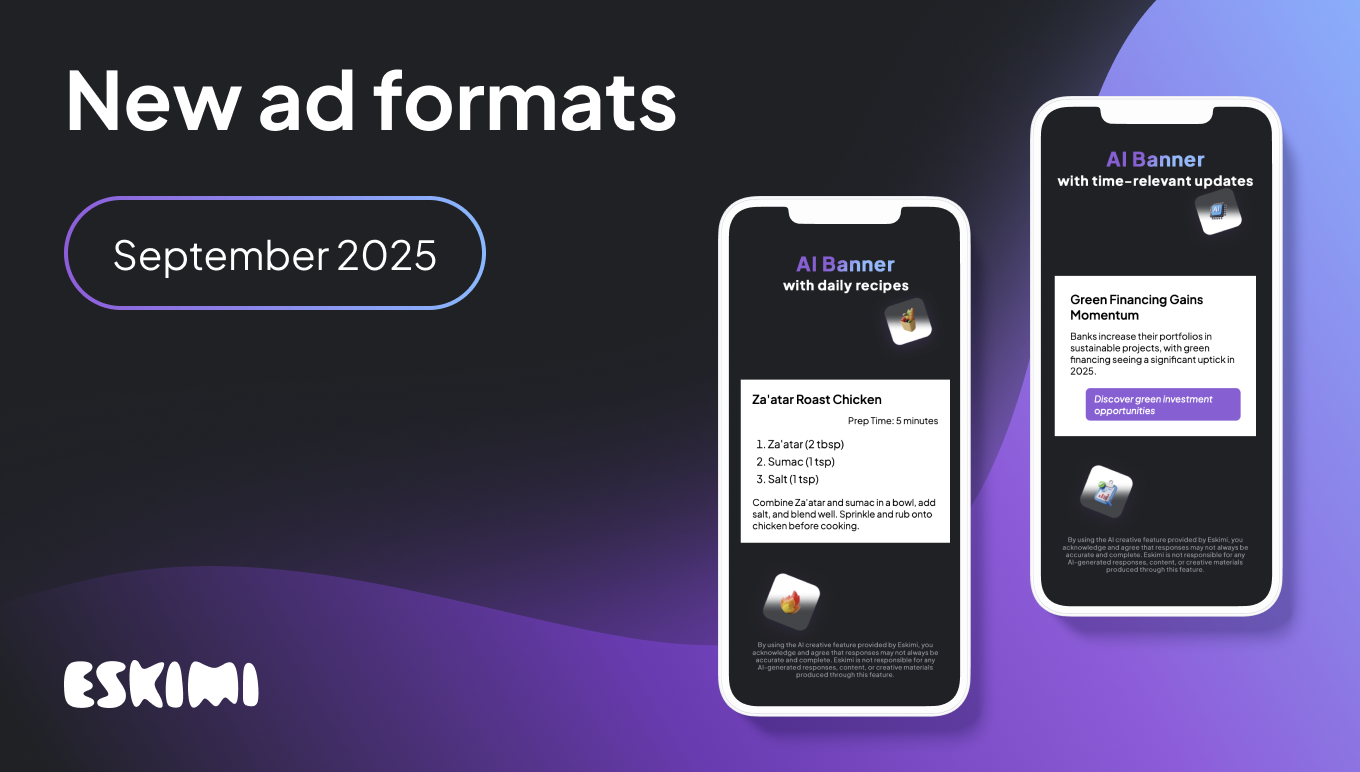What Is Programmatic Guaranteed? How It Works & Why Use It

Programmatic advertising is an effective way to make media buying and selling easier. But when you dive deeper into it, you might get confused by the variety of terms it comes with.
Listen to this:
Programmatic guaranteed is a part of programmatic direct deals that are one of the programmatic advertising types.
This simply begs for a more detailed explanation…
So in this post, you’ll learn what exactly programmatic guaranteed is, how it is unique from other programmatic types, what benefits it brings, and how it can help make your ad campaigns more effective.
What is programmatic guaranteed?
Programmatic guaranteed is a way to buy and sell ad placements programmatically. This process enables direct deals between advertisers and publishers but lets them avoid various manual processes, like exchanging tags or handling multiple invoices.

The key aspect of programmatic guaranteed, though, is that it allows advertisers to reserve ad inventory in advance at a fixed rate (CPM), ensuring that their ads will appear on specific websites and/or apps at specific times and will receive a certain number of impressions.
In other words, programmatic guaranteed deals offer a certain level of security regarding ad inventory. Advertisers can rest assured that their ads will be shown to their target audience, and publishers can celebrate filling their premium ad slots and reducing the chances that they will be left unsold.
How does it work?

Typically, advertisers start the process by identifying specific websites and/or apps where they want to show their ads, sometimes also considering particular time slots.
Then, the advertiser uses a DSP (software used for running and optimizing programmatic ad campaigns) to contact publishers and start the negotiation process.
Both sides has to agree on:
- Specific ad placements
- Fixed price (usually based on the placement of the ad, audience demographics, and time when you want to show your ads)
- Guaranteed volumes
- Particular time slots
Once advertiser and publisher are on the same page, they are obliged to fulfill the agreement.
Then, the advertiser creates an ad campaign and submits it to the publisher, and ads are displayed.
Is programmatic direct the same as programmatic guaranteed?
Although often used interchangeably, programmatic direct and programmatic guaranteed are not the same thing.
Programmatic guaranteed, together with preferred deals, falls under the umbrella of programmatic direct and defines direct agreements between advertisers and publishers.
In layman’s terms, it’s a form of programmatic direct that has its own specifics.

It means that with any programmatic direct deals (whether it’s programmatic guaranteed or preferred deals), advertisers negotiate the terms of the ad campaign with publishers directly. Other programmatic advertising types (RTB and PMPs) work on an auction basis.
How programmatic guaranteed differs from other programmatic types?
The key differentiator of programmatic guaranteed from other programmatic deals is that it comes with certainty – both regarding the costs of ad placements and the inventory itself.

Programmatic guaranteed vs. RTB
Programmatic guaranteed and RTB are two programmatic types that are probably furthest apart from each other.
While with programmatic guaranteed advertisers get to agree on specific placements with publishers directly, RTB lets everyone bid on available ad slots in an open auction.
Programmatic guaranteed is the only type of programmatic where the advertiser gets specific inventory reserved and can be sure their ads will be shown on the chosen websites/apps. With RTB, ad inventory is not guaranteed – advertisers need to win the auction to get the ad slot (the highest bid wins).
Programmatic guaranteed vs. PMP
Programmatic guaranteed can sometimes be confused for PMP deals, or private marketplace. Mainly because these two types are exclusive in their own way but still have one key difference.
Programmatic guaranteed deals, as we already know, happen between two parties. Meanwhile, PMP deals take place in a real-time bidding environment, yet only invited advertisers can access this private marketplace.
Simply put, PMP is auction-based but can still offer access to premium inventory since publishers choose to whom they want to sell their ad slots.
Programmatic guaranteed also offers premium inventory, but the agreements happen 1:1. As opposed to PMPs, with programmatic guaranteed the inventory is reserved for the specific advertiser.
Programmatic guaranteed vs. preferred deals
Preferred deals, as well as programmatic guaranteed, are a part of programmatic direct, which means that these deals also involve 1:1 negotiation – agreeing on premium placements, fixed prices, etc.
What is the difference from programmatic guaranteed, then?
While programmatic guaranteed is kind of a done deal, preferred deals aren’t. With preferred deals, advertisers and publishers agree on all the necessary details beforehand, like with programmatic guaranteed, but it’s optional for the advertiser whether or not to buy those placements.
In short, preferred deals offer more flexibility for advertisers – advertisers get “a priority” to bid on premium ad inventory for a pre-agreed price, but they are not obliged to buy it.
What are the benefits of programmatic guaranteed?
If there weren’t any benefits to programmatic guaranteed, why would we even talk about it, right?
It has some significant advantages for both sides, so let’s see them in more detail below.
For advertisers
- Secured ad inventory. With programmatic guaranteed, advertisers can be sure that their ads will appear on specific websites at agreed terms – fixed price and specific times.
- Guaranteed impressions. Programmatic guaranteed deals ensure that advertisers will receive a certain number of impressions that can help them increase the efficiency of ad campaigns.
- Premium ad inventory. The ability to choose provides advertisers with access to premium ad inventory – that they might not have been able to buy via the open market.
- Better brand safety. Programmatic guaranteed gives advertisers more control over their ad placements, allowing them to choose highly relevant and better quality contexts where their ads will appear, therefore, improving brand safety.
- Higher transparency. Since advertisers can see the exact inventory they’re buying and agree on ad campaign costs, the ad placement buying process becomes more transparent.
- Cost-effectiveness. As opposed to auction-based programmatic deals, programmatic guaranteed allows advertisers to buy ad inventory at a fixed price, which helps them manage their budgets better and save money in the long run.
For publishers
- Better revenue prediction. Since publishers know what inventory is sold and for what price, they can better predict and manage their revenues for that inventory and plan the revenue streams.
- Better user experience. Programmatic guaranteed offers publishers more flexibility towards what ads appear on their websites; therefore, higher relevancy can lead to increased engagement and better experience for the visitors.
- Increased transparency. Compared to auction-based deals, programmatic guaranteed lets publishers know how many impressions will be served and what ads will be shown to which audiences, improving the selling process.
- Better inventory management. Knowing in advance which ad slots are sold and when, publishers can better optimize their inventory and maximize revenue.
- Higher rates. Programmatic direct deals, programmatic guaranteed including, allow publishers to sell their premium inventory, therefore, get better rates on available ad slots.
Are there any drawbacks of programmatic guaranteed?
Before choosing programmatic guaranteed, it’s important to go through all the possible risks it comes with as it’s not for everyone.
For instance, advertisers can usually expect higher prices for ad placements “in exchange” for the possibility of choosing from the premium inventory. Some other disadvantages may include:
- Limited ad inventory. Sometimes, the inventory can be limited since advertisers get to choose only from placements that are presold.
- No clear benchmarks. Programmatic guaranteed also doesn’t offer any benchmarks for ad slot prices (e.g., floor price or other bids), and it can sometimes be challenging to evaluate whether or not the price is really fair.
- Lack of flexibility. Programmatic guaranteed lacks flexibility – advertisers get locked into specific agreements with publishers once the deal is made.
For publishers, the entry barrier is relatively higher and might not work or bring many benefits to those with a smaller audience and limited connections.
Also, if publishers only sell placements via programmatic guaranteed deals, the chances are that more of their ad slots will be left unfilled compared to other programmatic types.
Get started with programmatic guaranteed
Like any new opportunity, programmatic guaranteed has some valuable benefits as well as limitations that you have to consider before starting.
It can be a highly effective way to deliver your ads to the right audience in a quality environment, yet the key thing for success is to evaluate whether or not this specific programmatic advertising type meets your needs and campaign/brand objectives.
Need help getting started? Contact the Eskimi team or book a demo for a successful launch.
Level Up Your Advertising with Eskimi
- Reach 96% of Open Web
- 2,500+ Targeting Options
- 100% Managed or Self-Service
- In-House Creative Studio Team
- Display, Video, In-Game & CTV
- #1 Rated DSP on G2


.png)

